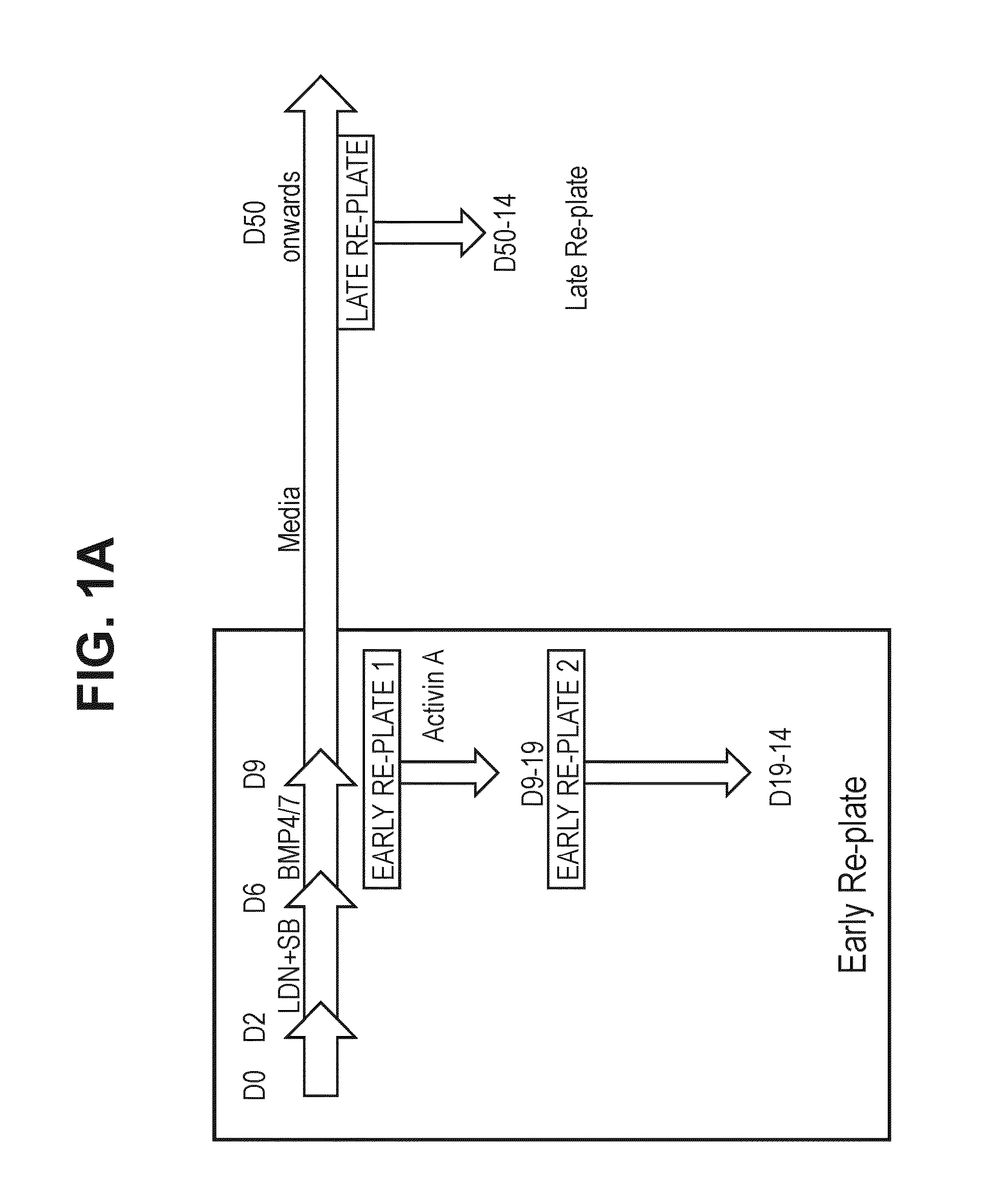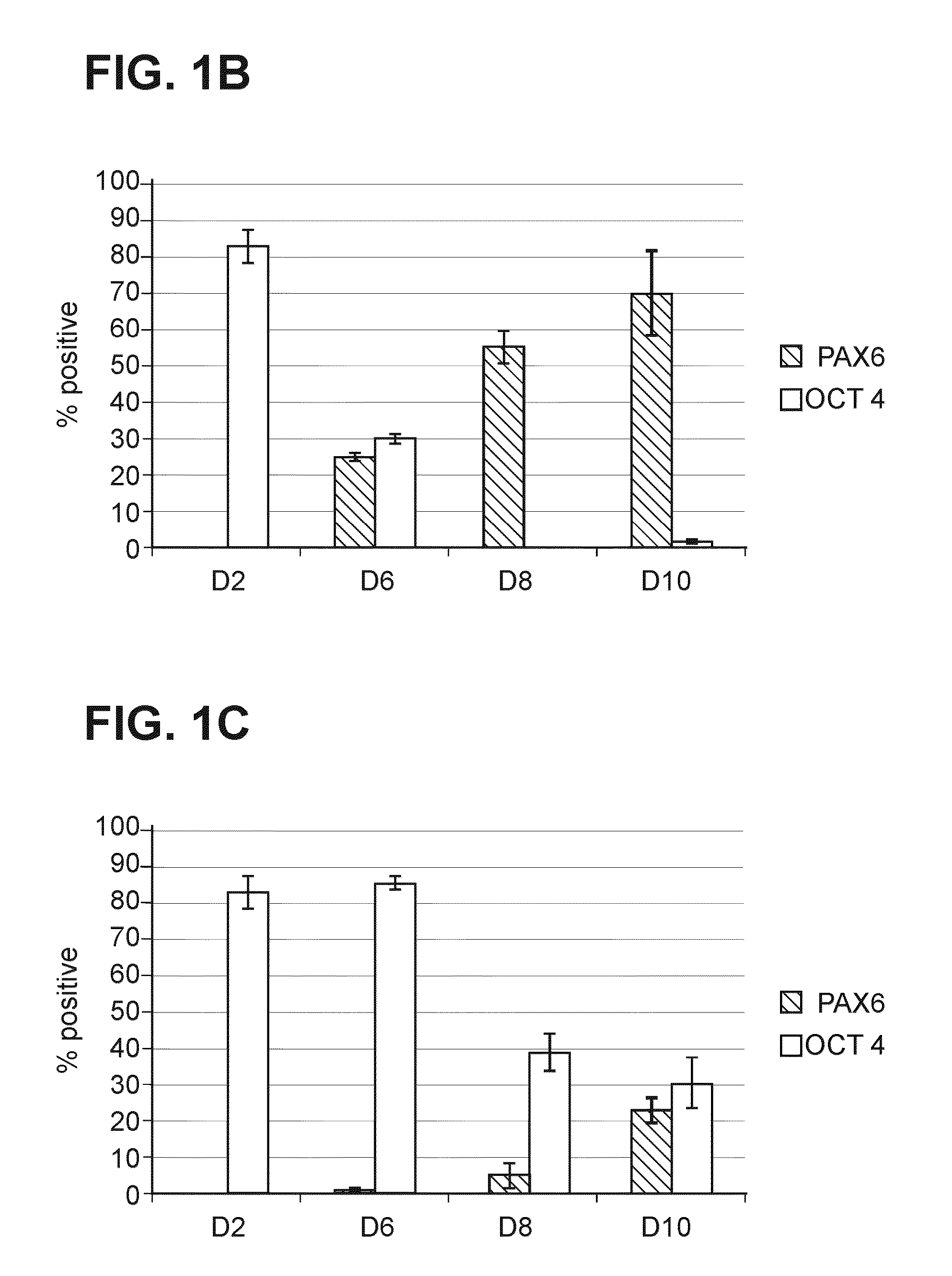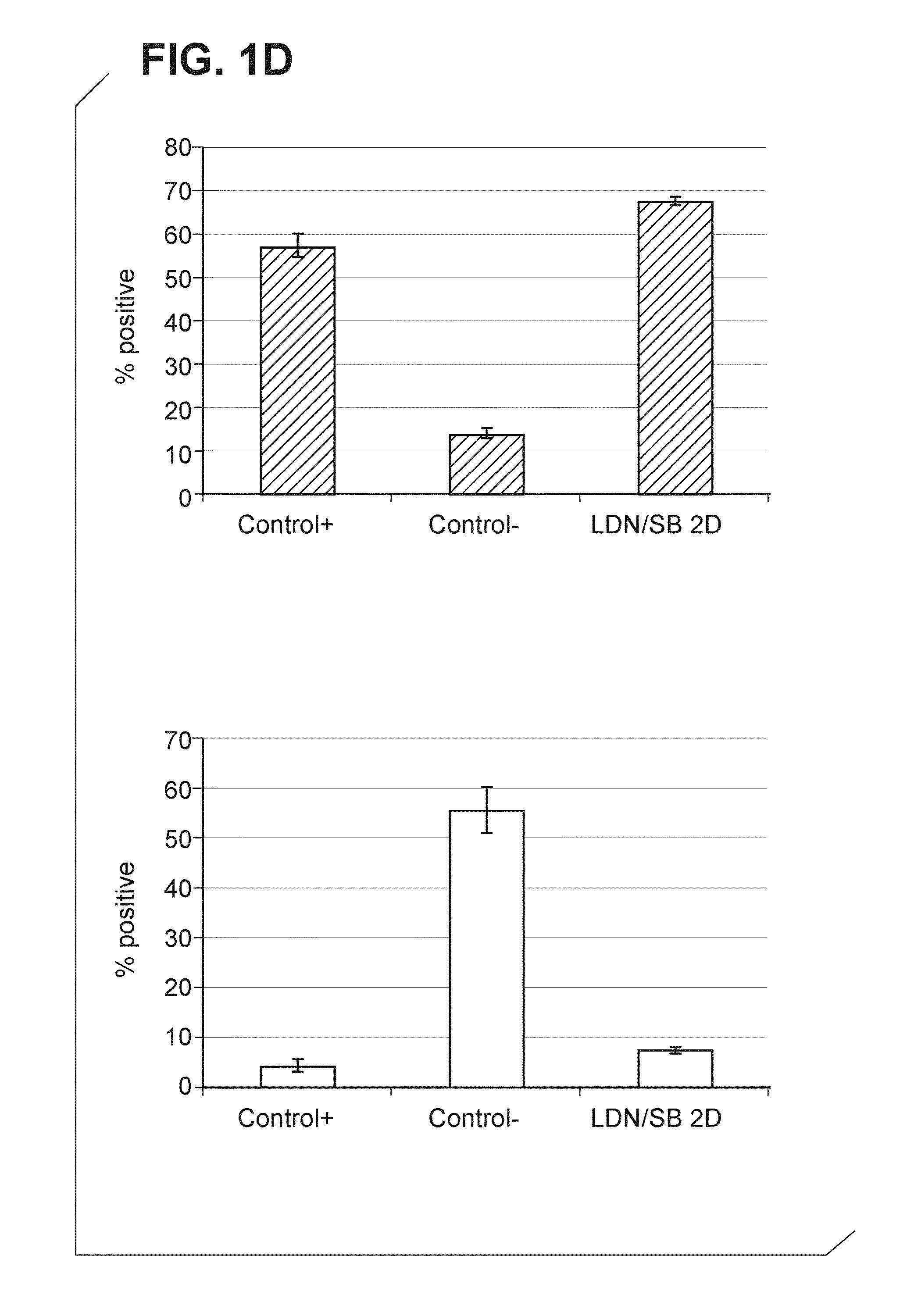Method for producing retinal pigment epithelial cells
- Summary
- Abstract
- Description
- Claims
- Application Information
AI Technical Summary
Benefits of technology
Problems solved by technology
Method used
Image
Examples
example 1
Directed Differentiation with Early Replating
[0328]All work was carried out in a sterile tissue culture hood. Shef-1 hESC were routinely cultured on Matrigel (BD) in TeSR1 media (Stem Cell Technologies). WA26 hESC (Wicell) were routinely cultured in Essential 8 Medium (Life Technologies) on human vitronectin (Life Technologies). Cultures were passaged twice per week using 0.5 mM EDTA solution (Sigma) to dissociate the colonies into smaller aggregates, which were then replated in medium containing 10 μM Y-27632 (Rho-associated kinase inhibitor) (Sigma). The culture medium was replaced daily.
[0329]Shef1 or WA26 hESC (Wicell) were incubated with 10 μM Y276352 (ROCK inhibitor) for 35 min at 37° C. Media was removed and the cells were washed with 5 ml PBS (—MgCl2, —CaCl2) (hereafter PBS (− / −)). 2 mL TrypLE Select® was added and cells incubated at 37° C. / 5% CO2 in a humidified incubator for 6-8 min. DMEM KSRXF media was prepared as follows:
VolumeComponentCatalogue Number(mL)Knockout (KO) ...
example 2
Treatment with SMAD Inhibitors
[0339]This example illustrates the effect of SMAD inhibitors on hESCs.
[0340]2.1. Treatment with SMAD Inhibitors Leads to ANE Formation
[0341]Shef-1 hESCs were seeded onto Matrigel coated 96-well plates at a density of 125000 cells / cm2. On Day 2 post seeding, cells were treated with 1 μM LDN193189 and 10 μM SB-431542 and samples were fixed at Day 2, Day 6, Day 8 and Day 10. Immunocytochemistry was carried out for PAX6 (marker of ANE) expression and OCT4 (marker of pluripotent hESCs) downregulation. A uniform induction of PAX6 protein and a uniform decrease of OCT4 over the time course of differentiation was seen in samples induced with LDN193189 and SB-431542 (FIG. 1B). This was observed not only on the whole surface of one well of a 96-well plate but similarly in all the wells within the plate indicating a robust induction with low inter / intra plate variability. In contrast, samples not treated with LDN193189 and SB-431542 and maintained in media alone e...
example 3
Induction of RPE Markers
Example 3.1
Induction of MITF by Activation of BMP Pathway
[0345]This example illustrates the effect of a BMP pathway activator on RPE marker expression. Shef-1 hESCs were seeded onto Matrigel coated 96-well plates at a density of 125000 cells / cm2. On Day 2 post seeding 1 μM LDN193189 and 10 μM SB-431542 were applied for 4 days. Cells for the uninduced control were left untreated. On Day 6, 100 ng / ml BMP4 / 7 or 100 ng / ml activin A+10 mM Nicotinamide or nothing was added to the media for 3 days. On Day 9, BMP4 / 7 or activin A and Nicotinamide were withdrawn and cells were treated with DMEM KSRXF alone for 4 days. Samples were prepared for RNA extraction and qPCR analysis. The results are summarized in FIG. 2A.
[0346]BMP4 / 7 induced expression of RPE genes e.g MITF and PMEL17 as compared to uninduced or LDN193189 / SB-431542 only treated controls. Furthermore, activin A+Nicotinamide could not substitute for BMP4 / 7 (FIG. 2A). Immunocytochemistry was also performed on sa...
PUM
 Login to View More
Login to View More Abstract
Description
Claims
Application Information
 Login to View More
Login to View More - R&D
- Intellectual Property
- Life Sciences
- Materials
- Tech Scout
- Unparalleled Data Quality
- Higher Quality Content
- 60% Fewer Hallucinations
Browse by: Latest US Patents, China's latest patents, Technical Efficacy Thesaurus, Application Domain, Technology Topic, Popular Technical Reports.
© 2025 PatSnap. All rights reserved.Legal|Privacy policy|Modern Slavery Act Transparency Statement|Sitemap|About US| Contact US: help@patsnap.com



